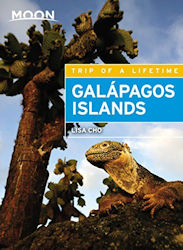The Galápagos Islands are a group of volcanic islands located in the Pacific Ocean, approximately 1,000 km (620 miles) off the coast of Ecuador. The archipelago consists of 18 main islands, 3 smaller islands, and 107 rocks and islets. The islands are known for their unique wildlife, stunning landscapes, and important role in the history of science.
The Galápagos Islands are home to a variety of animals that are found nowhere else in the world. The most famous of these is the Galápagos tortoise, which can live to be over 100 years old and weigh up to 500 pounds. Other iconic species include the blue-footed booby, the marine iguana, and the Galápagos penguin, which is the only penguin species that lives on the equator.
The islands were first visited by Europeans in 1535 when the Spanish explorer Fray Tomás de Berlanga stumbled upon them by accident. It wasn’t until 1835 that the islands gained scientific significance when Charles Darwin visited the HMS Beagle. Darwin’s observations of the unique wildlife on the islands helped him develop his theory of evolution by natural selection.
Today, the Galápagos Islands are a UNESCO World Heritage Site and a popular destination for tourists and scientists alike. Visitors to the islands can explore the unique landscapes and observe the wildlife up close. Activities include hiking, snorkelling, diving, and boat tours.
However, tourism also poses a threat to the delicate ecosystem of the Galápagos Islands. The islands are home to many endangered species, and the introduction of non-native plants and animals can have a devastating impact on the local wildlife. To protect the islands, the Ecuadorian government has implemented strict regulations on tourism, limiting the number of visitors and requiring them to be accompanied by licensed guides.
In conclusion, the Galápagos Islands are a unique and fascinating destination that offers a glimpse into the evolution of life on Earth. With their diverse wildlife, stunning landscapes, and important place in scientific history, the islands are a must-visit destination for anyone interested in nature and science. However, it’s important to remember to tread lightly and respect the delicate ecosystem of this special place.
Best Time to Visit the Galápagos Islands
The best time to visit the Galápagos Islands depends on your interests and what you would like to see and do. The Galápagos Islands have a subtropical climate with two seasons: a cool and dry season from June to November, and a warm and wet season from December to May. Here’s a breakdown of what you can expect during each season:
Cool and Dry Season (June to November): This is the best time to visit if you’re interested in seeing marine life. During this time, the ocean currents bring nutrient-rich water to the Galápagos, which attracts large schools of fish and other marine life. This, in turn, attracts predators such as sharks, sea lions, and penguins. The water temperature is cooler, making it an ideal time for snorkelling and diving. The air temperature is also cooler, making hiking and other land activities more comfortable. Keep in mind that the seas can be choppy during this season, which can make for a bumpy boat ride.
Warm and Wet Season (December to May): This is the best time to visit if you’re interested in seeing birdlife and land animals. During this time, the islands are lush and green, and many bird species are nesting and breeding. This season also sees an increase in the number of land animals, such as giant tortoises, iguanas, and sea lions. The water temperature is warmer, which can make snorkelling and diving more comfortable. However, this season also sees more rainfall and humidity, which can make hiking and other land activities more challenging.
Overall, the Galápagos Islands can be visited year-round, but the best time to visit depends on your interests and preferences. If you’re interested in marine life and snorkelling, the cool and dry season is the best time to visit. If you’re interested in birdlife and land animals, the warm and wet season is the best time to visit.
Average Temperature in the Galápagos Islands
The Galápagos Islands have a subtropical climate with relatively stable temperatures throughout the year. The average temperature in the Galápagos Islands ranges from about 70 to 80 degrees Fahrenheit (21 to 27 degrees Celsius). During the cool and dry season (June to November), the average temperature is usually around 70 to 75 degrees Fahrenheit (21 to 24 degrees Celsius), while during the warm and wet season (December to May), the average temperature is usually around 75 to 80 degrees Fahrenheit (24 to 27 degrees Celsius).
While the temperatures in the Galápagos Islands remain relatively stable throughout the year, there can be some variation based on the island and the time of day. The higher-elevation islands tend to be cooler than the lower-elevation islands, and temperatures can drop at night, especially during the cool and dry season.
It’s important to note that the Galápagos Islands are located on the equator, so the sun can be very strong. Visitors should take precautions to protect themselves from the sun, such as wearing sunscreen, a hat, and sunglasses, and staying hydrated.
Credits
Photo: Sea turtle, Galápagos Islands. Photo by: Dustin Haney on Unsplash






